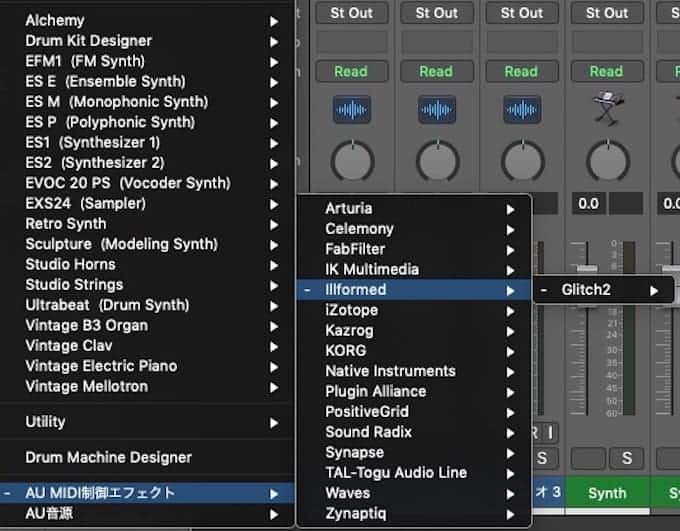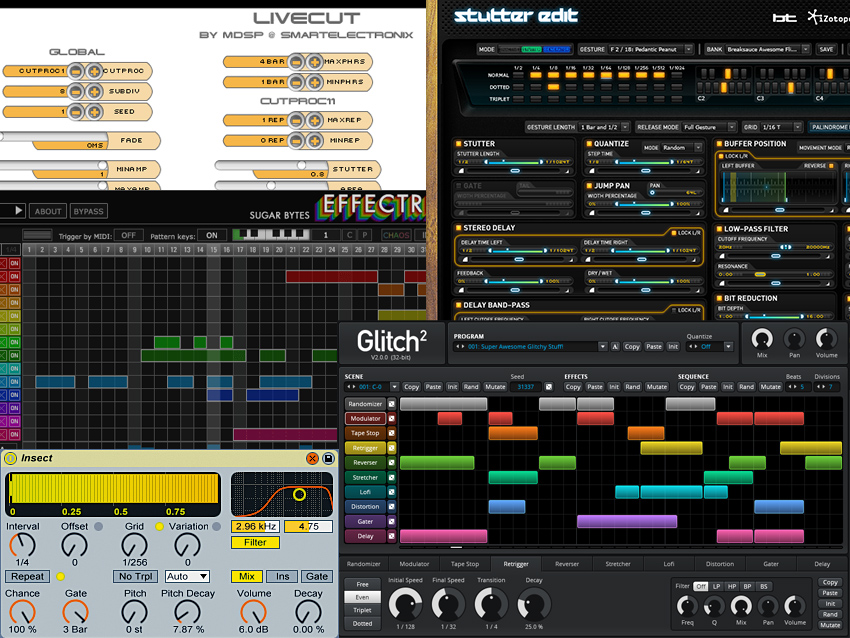

- #Dblue glitch 2 logic pro x install
- #Dblue glitch 2 logic pro x manual
- #Dblue glitch 2 logic pro x code
- #Dblue glitch 2 logic pro x download
- #Dblue glitch 2 logic pro x free
I chose to select Freesound support along with VST by running the following command line in the main directory of the Ardour source code.

There are many options, listed in the Ardour tutorial.
#Dblue glitch 2 logic pro x code
Once the source code was downloaded, I created an “ardourvst” directory in my home directory, and extracted the source code file in that location.
#Dblue glitch 2 logic pro x download
The Ardour Source code is available on the download page at Ardour: The following are required for Ardour 2.x, and the specific version I needed for Ubuntu 8.10 are listed here.įollowing directions for building with VST support, wine packages are also needed I chose to build version 2.8 of Ardour, as that is the stable release at this time, and my goal is to run vst plug-ins on Linux.
#Dblue glitch 2 logic pro x install
In general, I only needed to install the -dev package for each of the libraries above. From the list above, I only needed to install scons, gettext and libtool.

Using synaptic package manager, I searched for each of these packages to see if they were already installed or mark for install. The package and library names listed below are for Ubuntu 8.10.īuilding Ardour with VST support on Ubuntu 8.10 – The experience, packages and libraries.Īll packages and libraries below were installed using the versions available through the synaptic package manager. What follows are the steps I took for building Ardour on Ubuntu 8.10.Įxcellent directions are available on the Ardour site for building the application with specific options, including VST support.įollowing the directions on the Ardour site for building the application with VST support on Linux, here are the specific steps I needed to complete for Ubuntu 8.10. After brief research, I decided building Ardour with VST support appeared to be the best option. My goal was to run VST plug-ins on Linux, but I soon discovered there are issues related to making that happen. You will not be able to save presets in Glitch, so be sure and bounce your creations before closing Glitch. Glitch is a great tool for creating new sounds, and even though the Glitch sequencer is not in sync with Ardour, it is easy to chop and re sync if needed. The result is shown in the sine_440_8617 region in the tracks screenshot. The step envelope setting was increased to 2 steps, as shown below, to hear more of each effect. To give you an idea of how Glitch works, the Glitch settings for the sine_440_gater region are shown here. The source file is a 440 sine wave, shown on the bottom track. This screen shot shows 3 output tracks from Glitch, which were adjusted on the timeline to start in sync. I tried Ardour’s rhythm ferret, but the transients weren’t detected correctly. This is usable if you just chop up the output and re sync it to your project. The Glitch output appears to be 80 bpm default, though it is not in phase with Ardour since there is no sync. I bounced the Glitch output to a file and imported that back into Ardour to determine the tempo of the output. VST Plug-in’s are not able to track tempo
#Dblue glitch 2 logic pro x free
Unfortunately, vst plug-ins are not able to track Ardour’s tempo map, which means the Glitch sequencer is free wheeling, and not in sync with Ardour. The 4 gray squares above, along with the step envelope setting still produce one output pulse for each step, shown in the sine_440_blank region shown in the tracks screenshot below. In order to work with Ardour, MIDI transport must be disabled in Glitch, as shown below: Now that the plug-in is copied to the appropriate directory, I launched the vst version of Ardour using the command ardourvst, opened the mixer, and added the plug-in to one track. In my case, with Ardour on Ubuntu 8.10, the vst plug-in location was /usr/lib/vst.

I downloaded the file dblue_Glitch_v1304.zip and extracted to my vst directory.
#Dblue glitch 2 logic pro x manual
The plug-in and manual are available at: I find the interface intuitive, and the visual design is clean and well organized. This plug-in brings the concept of effects sequencing to your host workstation, and provides an intriguing method for creating unusual sounds and rhythms. My earlier post detailed the steps for building Ardour with VST support, which was the first step in getting the dblue Glitch plug-in running on linux.


 0 kommentar(er)
0 kommentar(er)
